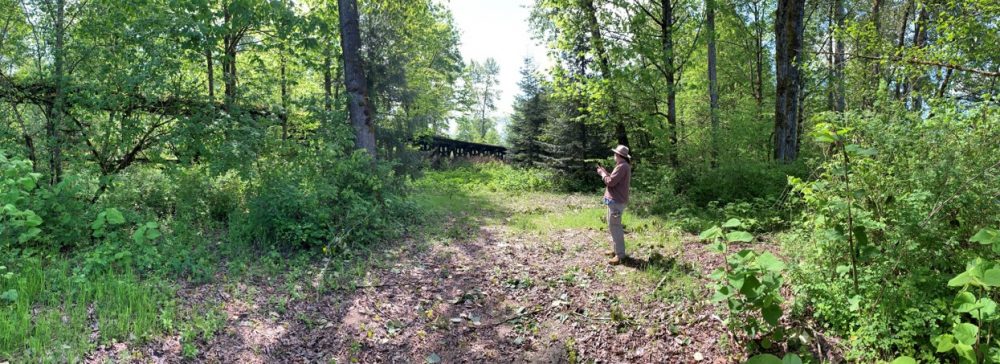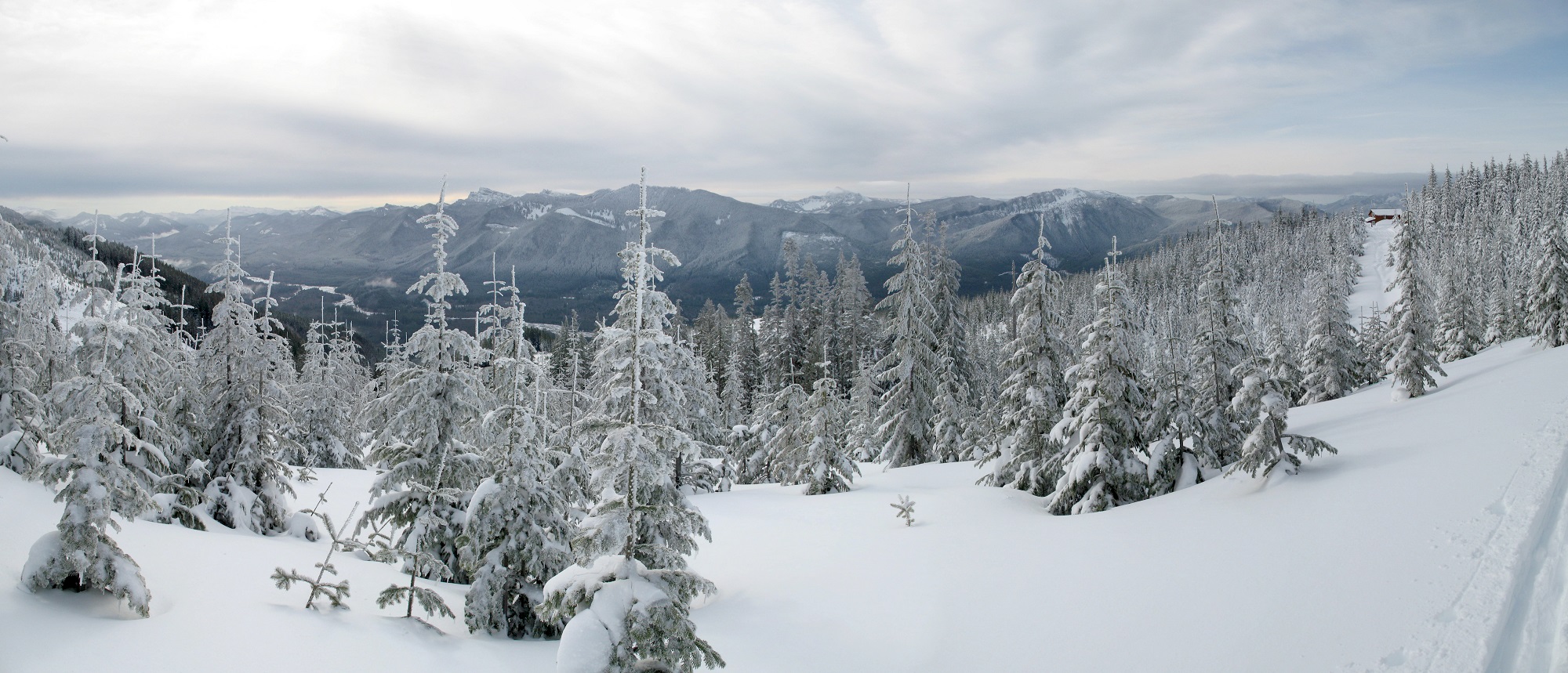A reflection on philosophical positioning on the eve of Camp Skykomish
The goal of “biocultural restoration field stations” is to create a “generative space” that is capable of exploring and interacting with social-ecological evolution in specific places. This “generative space” is useful because our culture is hurtling towards a forced transformation. Our broad global colonial-industrial social vision of endless consumption and progress is now meeting ecological limits of global carrying capacity, as we encounter the degradation of water, soil and biodiversity accelerated by climate change. I propose that study, experimentation and evolution will require what I would describe as “immersive place-based” education.

In the lowland Salish Sea, the “river forest” is a particularly poignant example of a kind of place in the thrall of complex unintended outcomes. The “river forest” is at the intersection of complex social-ecological drivers. In Salish Sea floodplains, rivers historically wrestled with forests within a post glacial geomorphic setting, to create a complex habitat mosaic–the foundation of the salmon nation. In addition to being the foundation of biodiversity and wild flood production, these same floodplain corridors contain core transportation, housing, and energy infrastructure, core food production systems, critical above and below-ground water sources, and are the flashpoint for future flood hazard under climate change. From a bioregional perspective, these river-forest corridors are exceptionally valuable and irreplaceable. Under declining global food security, urban areas will turn to floodplains for survival.
Floodplains offer a powerful experimental and learning space to engage diverse social-ecological drivers. It is this convergence of diverse forces in real places that foils our cognition. We can’t figure out how to survive, unless we learn how to live in actual places. We cannot learn those patterns until we immerse ourselves in those specific places.
Consider the following social-ecological drivers that are at work in the Skykomish:
- Marketplace rewards for personal achievement, both through extraction and processing of natural resources, investment in infrastructure, real estate speculation, all positioned within a global and information-based economy in flux.
- Public infrastructure investments in common pool resources, including capital investment in fishery habitats, management of natural hazards, water quality and quantity, sometimes in conflict with enhancement of transportation and energy infrastructure.
- The unraveling of ecological systems, including the evolution of rivers, change in climate and hydrology and forest structure interacting over geomorphic time both affecting and affected by shifting keystone populations of salmonids, beaver, ungulates and flora.
- Cultural dynamics of belonging and separateness, with attempts to join or isolate among interdependent rural, urban, and tribal communities within the United States.
- The structure of ownership and the control of land, from colonization to the holdings of agricultural and forestry families and conglomerates, to rapid subdivision under population growth.
- Legal and regulatory systems and constraints, with increasing competition to control county land use zoning and ordinance systems using state and federal law.
- Risks posed by mass migration, insider-outsider dynamics perhaps best described in Steinbeck’s the Grapes of Wrath.
Many of these drivers evolve as interest groups exercise control and power over large scale socio-economic systems far away from actual places like the Skykomish. These socio-economic systems affecting the Skykomish Valley are both divorced from place and inextricably entwined with places. In short, the local outcomes of these drivers are typically unintended. Places manifest the intersection of drivers, not the intent of individual drivers or the will of those who live in the place. This is why immersive place-based education is so vital as communities wrestle at the unintended confluence of forces beyond their control. We face predicaments without solutions, but which require responses.
The purpose of the field station is to construct a generative educational and experimental environment within a place that can explore and interact with social-ecological systems. These field stations willfully center ecological systems, as the foundation of human existence and the source of all tangible wealth. This ecological focus could be considered a bias, or as a correction to abstracted economies of the colonial-industrial enterprise. Regardless, this shift to starting from an ecological assessment of place is useful, if for no other reason than it asks us to shift perspective, while not losing sight of the essential interactions between social systems and ecological systems.
The construction of a field station is intentionally “industry-adjacent”, such that we aim to create an experimental space that lives very close to existing social-economic systems, but is also relatively independent of any one social-economic system. In the case of the Skykomish Field Station we seek a position that is adjacent to multiple sectors: ecological restoration, food and material production, and flood hazard mitigation–the farm, fish and flood nexus. This is necessary so that experiments can entrain existing resources and engage existing actors, and thus provide opportunities for substantive experimentation and feedback specific to place.

By creating a nomadic residential capability in an industry-adjacent position we create two effects. Attending the field station involves a temporary separation from the existing social-ecological culture. This creates an opportunity to investigate the accouterments of human survival–food, water, shelter and care–in an immediate and tangible way. This experience attracts people that are willing and able to shift their position in ecological systems. In addition, a nomadic residential experience is extremely inexpensive, reducing operating costs and increasing accessibility. This results in a system that can grow rapidly, and that incidentally supports natural disaster resilience and even explores aspects of our increasingly complicated relationship with homelessness.
At this intersection, we aim to create a novel generative space where individuals can explore the intersection of social-ecological drivers in ways that deconstruct and reintegrate the divergent forces described above. In this setting we can become direct actors, investigators, and reporters of a specific place–the Skykomish Valley–which is representative of tens of thousands of acres of uniquely important social-ecological landscape throughout the Salish Sea bioregion.
Immersive place-based education is a recognition that these divergent and conflicting social and ecological systems have and will have cumulative effects in real places. Meaningful cultivation of a resilient and regenerative culture in real places requires creative work in very entangled spaces. By observing what has happened, what is happening, and what could happen in these real places, and creating experimental spaces for exploration of alternatives, we can better understand the actual systematic environment in which our evolution will unfold.
This is particularly important under ongoing global ecological collapse. In this way, the development of biocultural restoration fields stations is a carefully constructed open-ended response to a wicked problem.

Biocultural restoration field stations start with a weekend camping adventure on the banks of a river. People work, eat, sleep and play together. There we ask, “why are we here?” and seek to identify and develop small practical ways we can beneficially interact with a degraded ecological system through the practices of restoration and agroforestry. This serves as our initial topic–agroforestry and restoration in large river floodplain riparian zones and wetlands. The founders of Camp Skykomish suspect that evolution at this nexus may affect the future condition of the river forest corridor, enabling large-scale restoration and stewardship of a productive and resilient ecosystem. However the project does not end there. By establishing the field station as a viable location for groups to gather, we create the opportunity for an inclusive and inexpensive place-based education that can be replicated anywhere in the Salish Sea–the envisioned collaborative work of an “Ecosystem Guild”.
A critical place then becomes: how do we construct an educational context, that supports investigation and experimentation, and that can remain productively industry-adjacent? The educational industry, just like the restoration industry, is another social-ecological construct. In the existing educational system an immersive place-based education is only offered at a post-secondary level and only pursued by a small fraction of the population. How can the operation of a biocultural restoration field station, provide immersive place-based educational experiences that resonate within the education industry, but are also independent of that industry?


